
It’s the twenties and the market circumstances made brands revisit loyalty programs.
It might be hard to surf this wave without spending money on software. Connecting zero-party data, new customer experiences, and ecommerce backends with loyalty programs requires a unified view of customers – exactly what CDPs like Segment, Hightouch, and Aampe are built for.
Customer Data Platforms (CDPs) bring all your customer data together – from first-party to zero-party – and give you a single, actionable view of every shopper. For loyalty programs, this means every promotion, incentive, and message can feel personal and relevant instead of random.
CDPs like Hightouch (known for real-time data activation) or Aampe (specializing in AI-driven personalization) bring that precision to incentive campaigns.
With a CDP connected to your Promotion Engine, you can:
One of the Big 4 consultancy firms was tasked with finding out why “earn and burn” loyalty programs fail. They surveyed customers and came up with three reasons:
To fix these issues, brands need to get personal. That’s where Customer Data Platforms come in – they connect the dots between customer behavior and the incentives you send out. When promo codes are fueled by real customer data, they stop being just random discounts and turn into one of the easiest (and smartest) ways to build loyalty.
Picture a blank checkout page. Now, imagine dropping a sitewide promo code like “BLCKFRDY” across your web and mobile apps. It works, but it’s generic. By connecting your CDP (e.g., Hightouch or Segment) to a Promotion Engine, you can make those codes dynamic and relevant.
Such a setup allows you to:
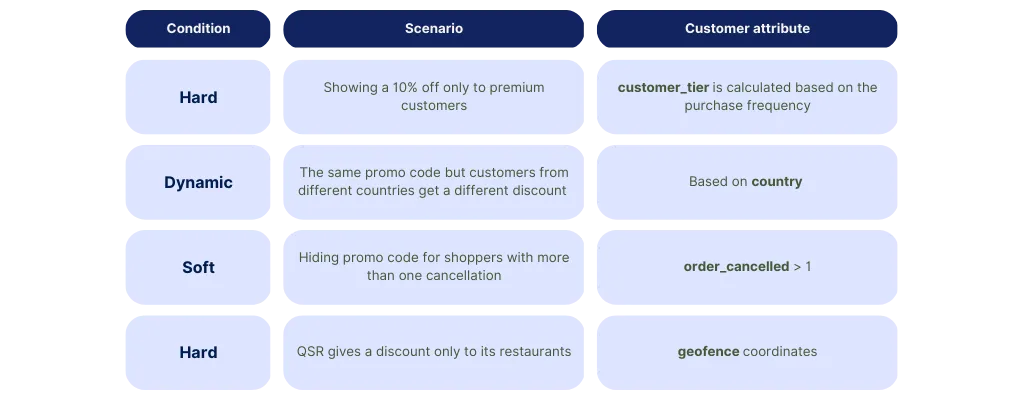
The beauty of a CDP & Promotion Engine pipeline? You can launch, test, and roll back campaigns in just a few clicks. No months of dev work required.
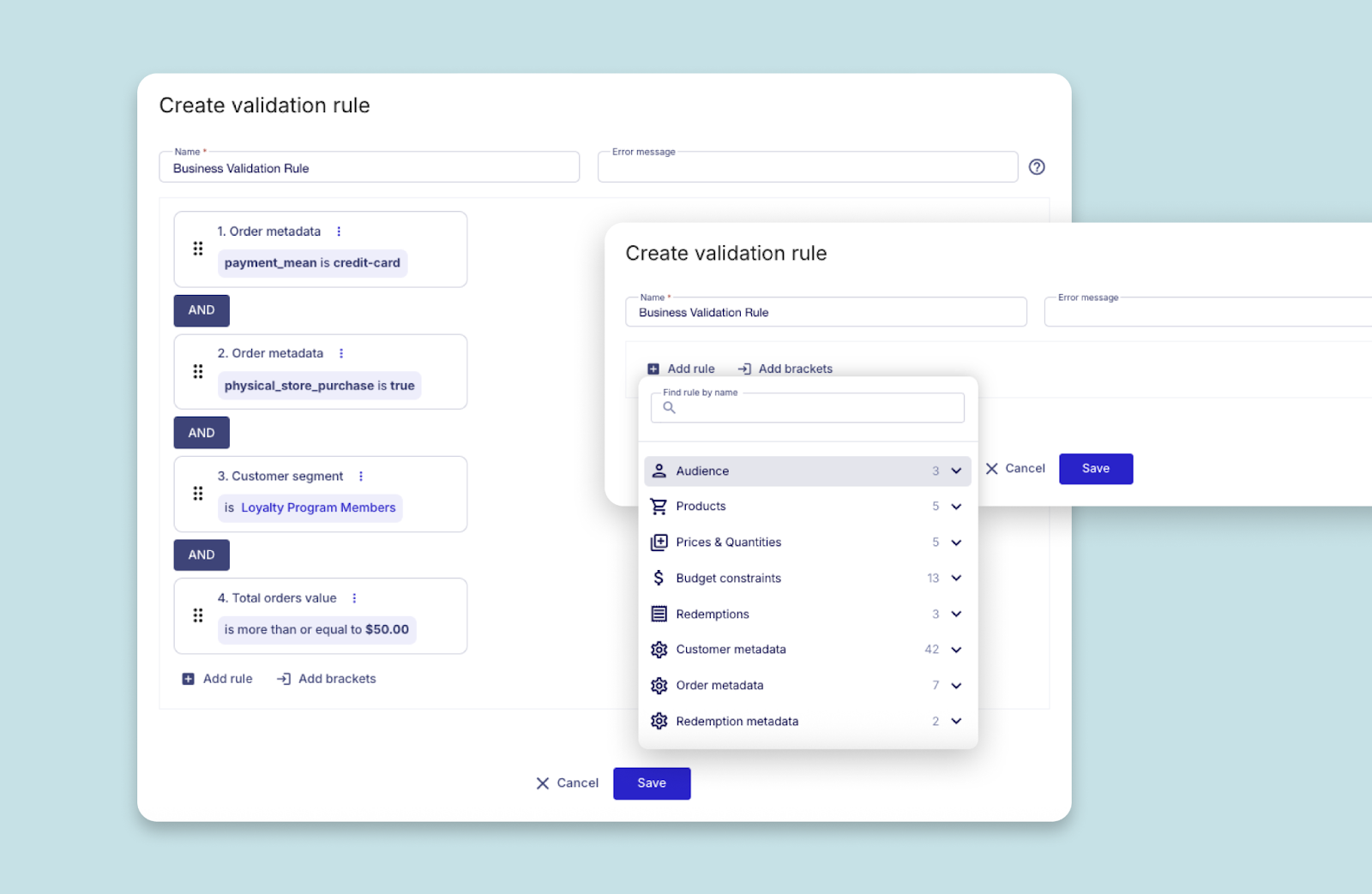
Sometimes public promo codes just aren’t enough. Maybe you need to be more selective about promotion eligibility, for example:
Targeted promotions are proven loyalty drivers and when fueled by a CDP, bulk promo codes become easy to personalize and scale. A CDP & Promotion Engine integration takes care of the complexity for digital teams. With this setup, generating millions of unique codes and linking them to customer profiles becomes a plug-and-play feature.
The only thing left to figure out? How to display those codes to the right people at the right time.
Manually managing code systems is a dev’s nightmare. Requests like “Can you turn off HAPPY10 just for today?” break workflows and slow teams down. With a Promotion Engine connected to your CDP, marketers and CS teams get full control to:
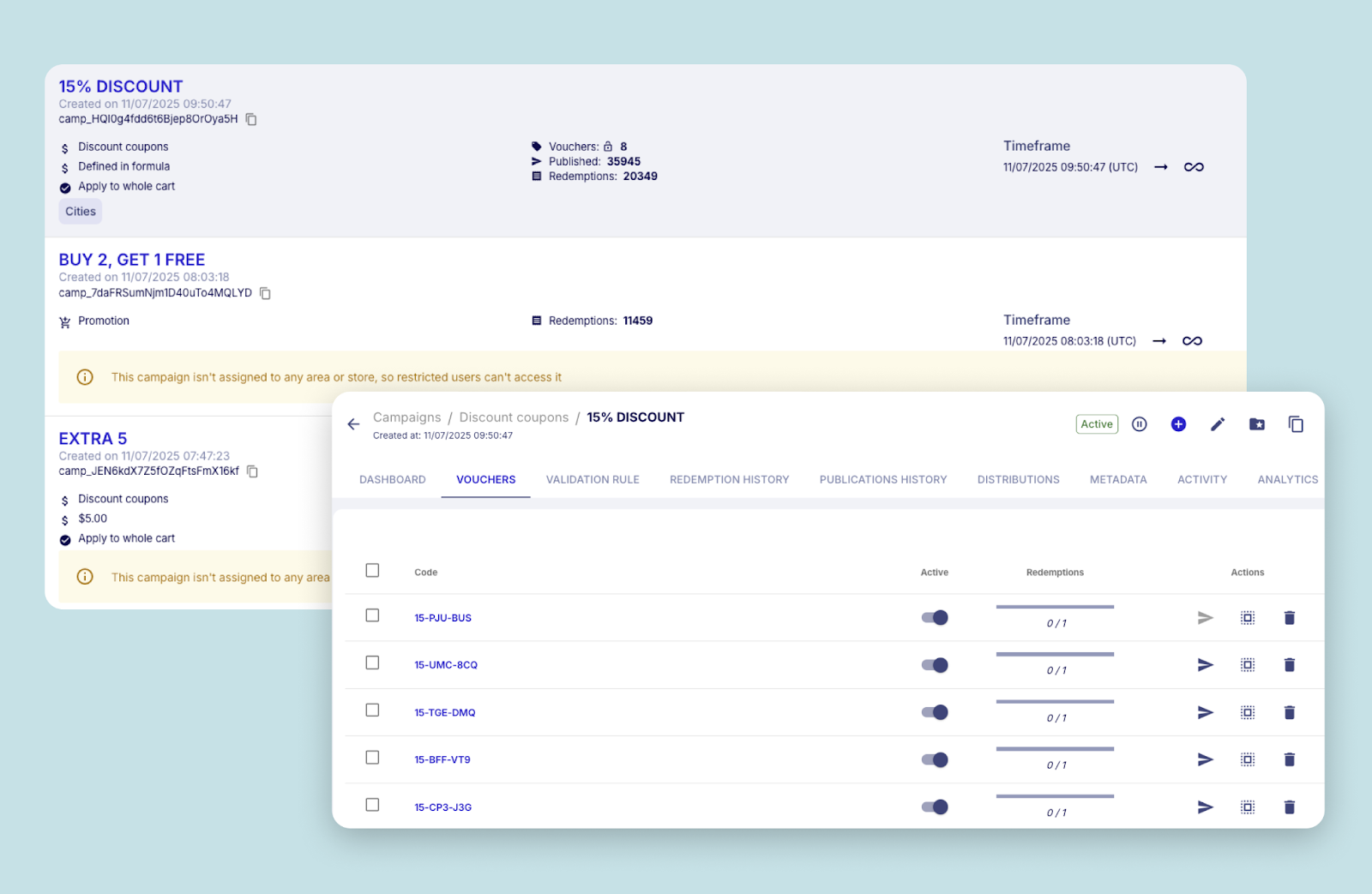
Imagine an endpoint that returns all valid promo codes for the logged-in user. With a Customer Data Platform (CDP) feeding real-time data into your Promotion Engine, you can place targeted incentives at every step of the funnel.
Start with personalizing discounts on site-wide banners. Then step it up:
The real magic happens when your Promotion Engine uses data from both your CDP and the customer’s current cart. Suddenly, the promo rules tree expands, giving you new levers to control margins, test strategies, and drive repeat loyalty.
A CDP-fed Promotion Engine can go far beyond basic minimum spend requirements:
Carsome uses a mix of promo rules to drive car sales based on customer activity and stock data. The longer a car sits in inventory, the worse it is for business. By connecting a CDP with a Promotion Engine, Carsome tracks user behaviors (browsing, clicks, cart abandonment), and applies tailored discounts in real time based on these insights.
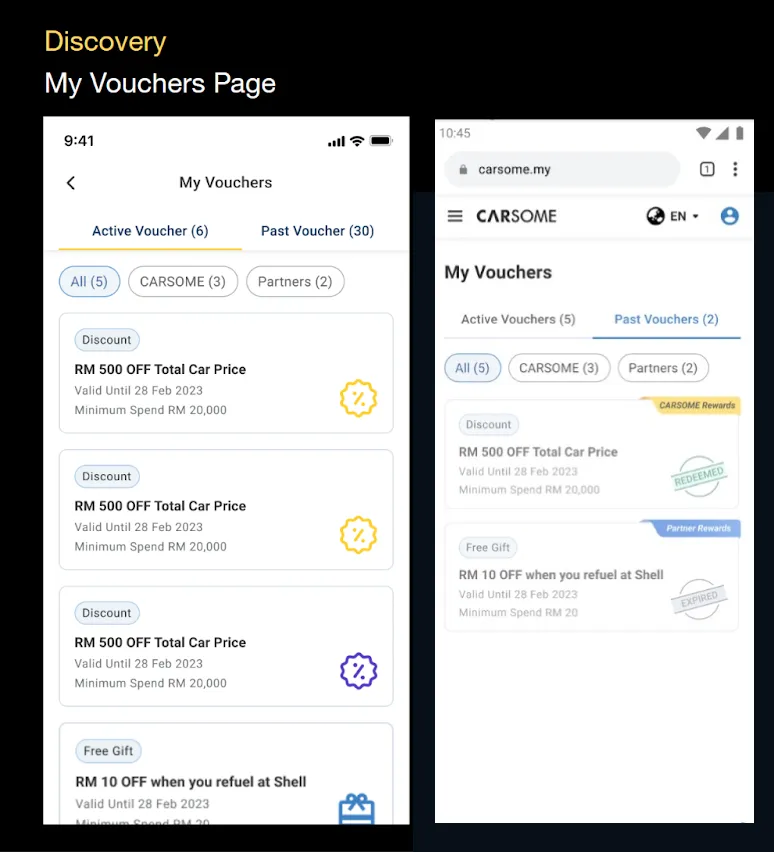
Want to skip manual codes altogether? You can. With advanced Promotion Engines, you can switch to auto-applied discounts, triggered by cart content, segments, or behavioral data from your CDP. For example, a “buy one, get one free” deal can be automatically applied without asking customers to enter a code.
You can take it to the next level by creating a customer wallet – a list of all active incentives the customer is entitled to. Showing redeemed offers is also worth considering as, with a bit of creativity, you can use it to paint a positive picture of your brand.
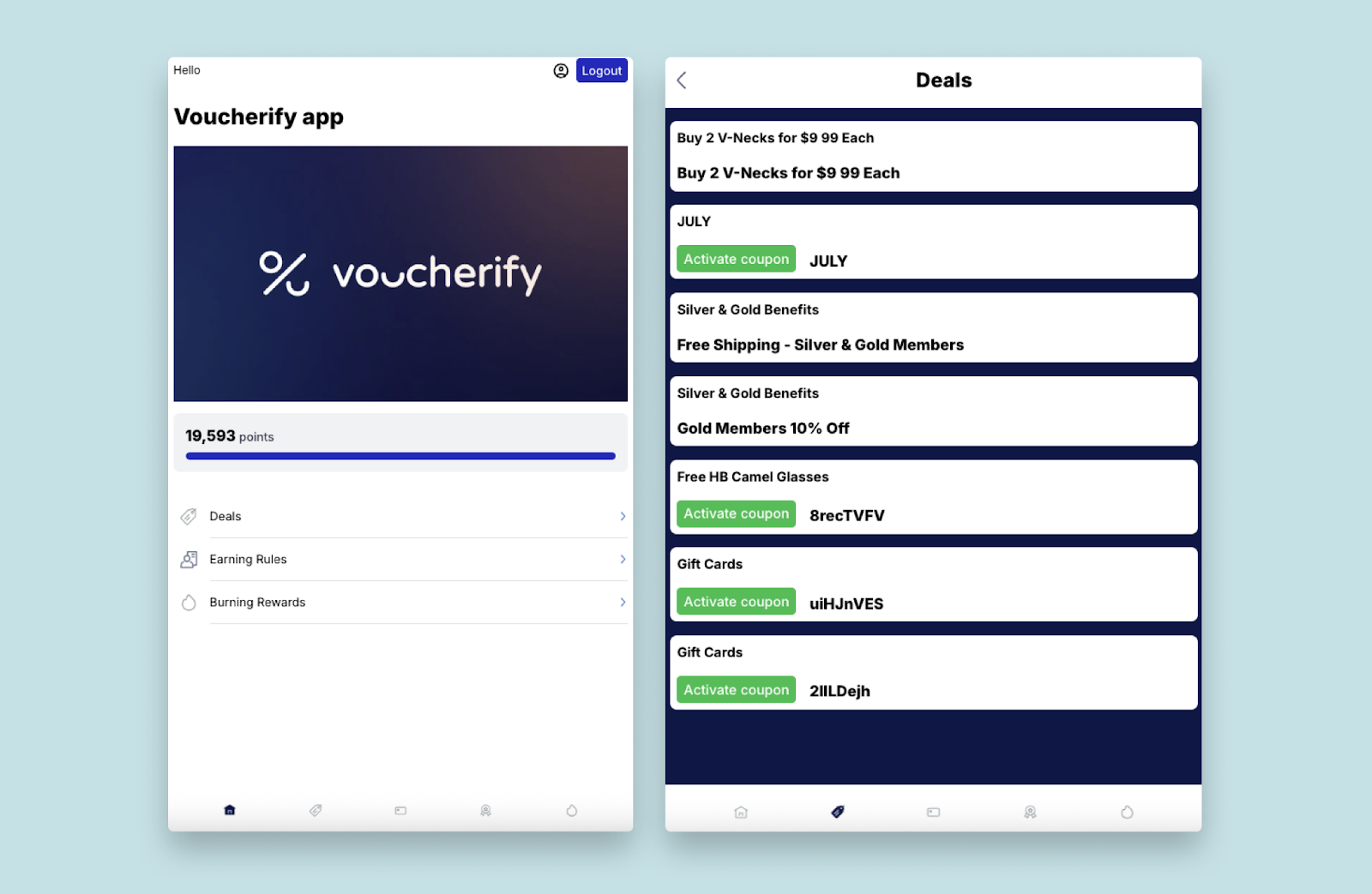
For customers who aren’t actively browsing your site, promo codes delivered through email, SMS, or push notifications remain some of the most effective CTAs. When powered by a Customer Data Platform and a Promotion Engine, these messages go from being generic blasts to laser-focused loyalty drivers.
Here’s how CDP-powered workflows can look in action:
These examples show how real-time events, common customer attributes, aggregated data, and interaction with previous offers managed by a Promotion Engine, can be used to trigger an incentive/reward workflow.
There’s one caveat: connecting promotions with large-scale messaging campaigns requires planning. Email and SMS deliverability rules need to be respected, and your system should throttle and queue data correctly so every message arrives with the right {{placeholders}} filled in.
When your CDP, Promotion Engine, CRM tools, and checkout system are tightly integrated via API-first architecture, the possibilities expand dramatically.
Pomelo, for one, used this approach to roll out a massive customer acquisition campaign together with a referral program. They built it in weeks and the project has been rewarded by Braze. We even prepared a step-by-step guide for glueing four API-first tools to achieve a similar effect.
And that’s just scratching the surface. With tools like Braze’s Connected Content, you can embed personalized promotions directly into message templates with minimal coding. Here’s a list of Braze x Voucherify Liquid examples presenting some promotional scenarios.

Let’s take a step back and look at what we’ve built so far by combining a CDP with a Promotion Engine:
But there’s one crucial moment that defines success – the promo code redemption. A discount or reward only works if customers can apply it easily. So, how do we create a frictionless user experience for promo codes?
Implementing these UX improvements can be time-consuming, especially when you have both web and mobile touchpoints. Think of features like:
This is where a fine-grained REST API comes into play. SaaS Promotion Engines have endpoints for these use cases. You just model the backend once and connect the touchpoints.
Bonus: need ideas for the UI? Here’s a Figma Kit with the most common promotion and coupon components.
So, we’ve got everything ready: redemptions are up, sales are climbing, and re-engagement campaigns are running smoothly. We’ve already tackled the biggest challenge of any promotional strategy – lack of engagement. But there’s another nemesis waiting in the wings: margin erosion and fraud.
Promo codes are like sharp tools in your marketing toolkit – precise and effective when used correctly, but risky if handled carelessly. The most common pitfalls?
Example: You offer a $10 discount on the “arabica coffee” category. If some SKUs in that category have a profit margin below $10, you’re effectively losing money with every purchase. It gets worse if a savvy shopper buys out your entire stock.
A Promotion Engine integrated with your CDP gives you the power to define discount formulas, impose caps, and control promotion stacking. By protecting your margins, you can focus on loyalty-building without worrying about revenue leakage.
Discounts can be adjusted based on formulas tied to order values, product prices, or even custom attributes like margin. Example: Voucherify can automatically scale a discount based on cart total or product mix.

You can “soften” limits for loyal customers or VIP tiers by using CDP segments. For instance, a high-value customer might get a slightly bigger discount while maintaining overall budget control.
Some promotions should combine, others shouldn’t. A flexible Promotion Engine gives you the logic to control how offers stack, ensuring discounts don’t double-dip into your margin.
Digital promotions, especially promo codes, are tempting because they look easy to roll out. But there’s a hidden cost: complexity and compliance. When building your Promotion Engine and integrating it with a Customer Data Platform, it’s crucial to plan beyond the proof-of-concept (POC) phase.
The path forward will look different for every team, but there are a few common challenges that come up when scaling loyalty campaigns.
Your marketing team needs to experiment – it’s their job to test, tweak, and improve offers daily. That means they need a user-friendly UI to:
Add approval workflows to the mix, and suddenly you’re looking at building a full-blown admin panel.
If your pilot is successful, the next step is going abroad. Different currencies, labels, discount policies, or event product catalogs may break your promotion strategy in lots of tiny places.
Once in a while you can hear a story about the promo code that unlocked a once in a lifetime deal for way too many customers. Sometimes the loss exceeds a decade-long licence for a Promotion Engine. But you can expect more risk out there. Fraud and malicious actors in your team do happen too (not to mention data leaks).
When running dozens or hundreds of promo code campaigns, investing in a coherent management suite with an audit log helps you sleep better.
Promo codes earned a special place in the SPAM prevention algorithms not without a reason. Even without GDPR implications, you want to be complicit with customers’ preferences. A good CDP & Promo Engine tandem respects people’s contact choice from the outset.
A single well-placed promo code can bring massive spikes in traffic. We’ve seen campaigns go viral after a TV ad – and when checkout systems aren’t ready, it kills the momentum (and the ROI). Scaling your infrastructure to handle high traffic is non-negotiable.
Connecting your promotions to ecommerce tools, data sources, and customer touchpoints can become a maintenance headache. A flexible, well-documented API will save countless hours when ensuring workflows, data integrity, and loyalty campaigns stay seamless.
These advanced loyalty use cases are complex, both in software and strategy. The good news? By testing and refining promo codes with a CDP and Promotion Engine first, you lay the groundwork for scalable, data-driven loyalty programs.
Once your promo workflows are battle-tested, it becomes easier to launch points-based rewards, hybrid loyalty models, and more personalized incentives.